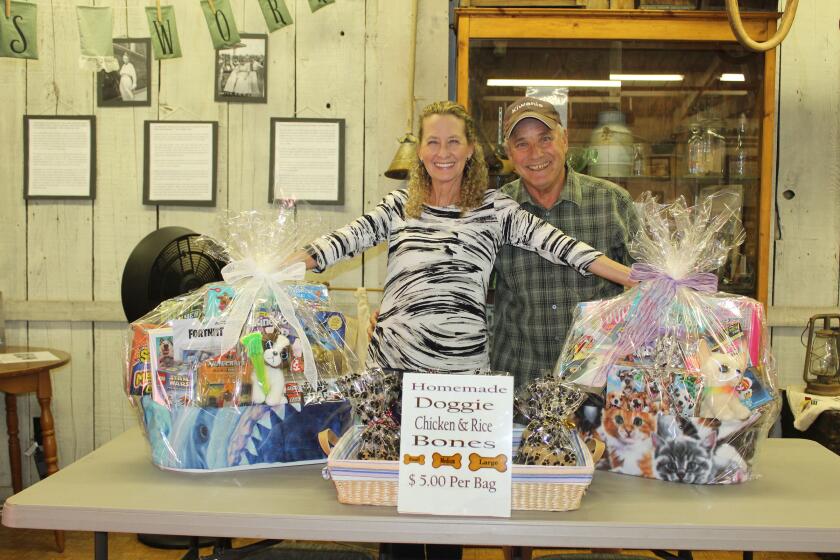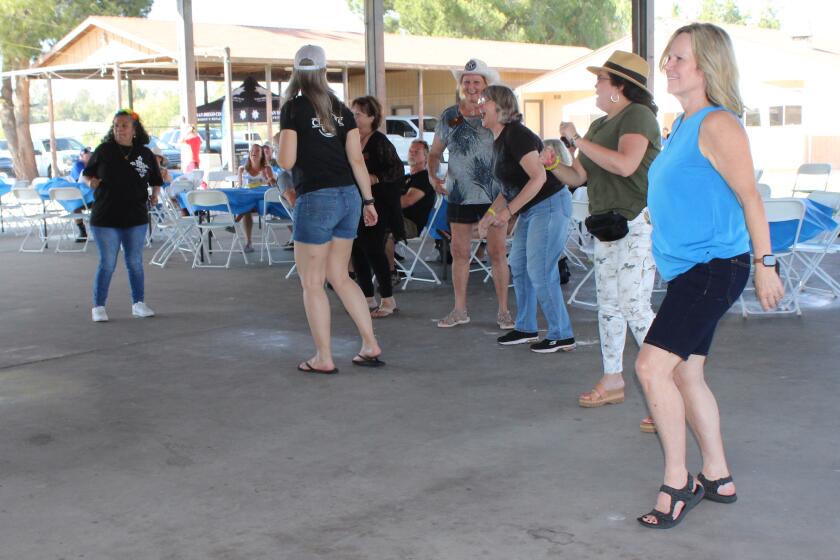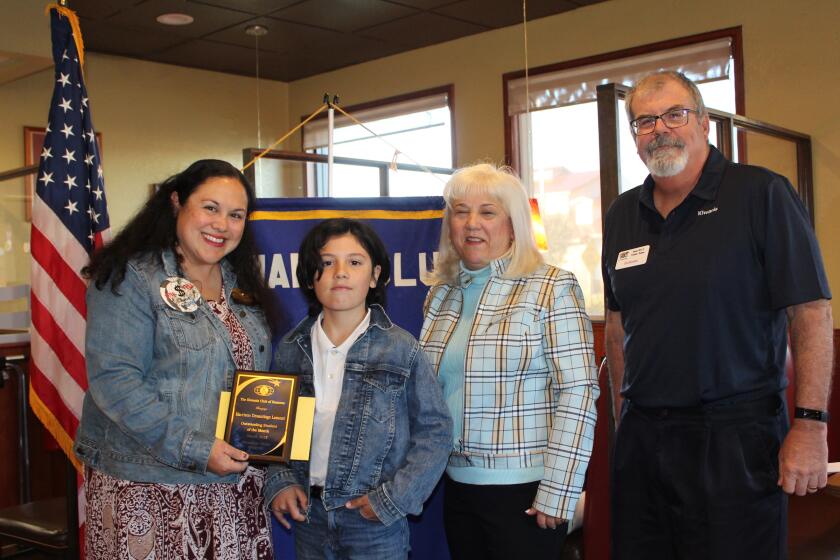Supervisors take tiered approach for horse industry
By JOE NAIMAN
In a 5-0 vote, San Diego County supervisors directed county staff to update the county’s equine regulations using a tiered ordinance.
The supervisor’s vote last Wednesday also designated $350,000 for the county’s Department of Planning and Land Use (DPLU) to prepare the ordinance and a Programmatic Environmental Impact Report.
“This is something I’ve wanted to address for a long time,” said Supervisor Bill Horn. “I know we’re starting on a journey, but at least we’re starting.”
A 5-0 Board of Supervisors vote March 2 directed the county’s chief administrative officer to work with the equestrian community and any other interested parties to investigate options that would protect and promote equine operations throughout unincorporated San Diego County. The options included the potential development of a tiered ordinance, similar to what the county has adopted for wineries.
Current equine regulations were developed more than 30 years ago as part of the county’s Zoning Ordinance. The regulations consist of horsekeeping, which allows for private use on properly-zoned parcels, and commercial stables. Commercial stables include boarding and breeding operations, which do not involve visitors from the general public. Commercial stables also include public stables that provide riding lessons, training, trail rides, equestrian events, and other public activities.
The update will focus on commercial stables and is not expected to change horsekeeping zoning. Issues that will be considered include traffic, noise, flies and other vectors, stormwater, dust and grading concerns, size of the operation and parcel, and proximity to neighbors.
According to the county report, a tiered ordinance would, based on the property size and number of horses, require a ministerial permit for some activities, an administrative permit (which involves notification to neighboring properties and public review but does not require a hearing unless one is requested by any party) for larger activities, and a minor use permit or major use permit for the largest operations.
The equestrian stakeholders said that a tiered ordinance was the most reasonable measure of the four options proposed and accepted the tiered ordinance concept. The county’ Planning Commission recommends Option B.
“The tiered ordinance would strike a balance,” said DPLU planning manager Joe Farace.
That balance would streamline the process for small equestrian businesses while still ensuring the protection of neighbors’ interests, said Farace.
Although a ministerial permit does not require public or environmental review, it is not a by-right permit as it is granted upon completion of conditions on a checklist. “Most stakeholders do not object to permits,” Farace said.
The concern, he said, is for the cost and time of discretionary permits, he said. “The focal point of most input from the equine community was the use permit process. The process for approving these permits has become more complex and costly.”
The ordinance and the EIR are expected to take about 24 months to process and will go to the Planning Commission before returning to the supervisors. One DPLU staff model calls for allowing operations for up to eight horses per acre, or one horse per 5,000 square feet, with a ministerial permit, although the final thresholds may incorporate lot sizes, total horse numbers, commercial uses in residentially-zoned areas, and a distinction between the types of uses.
DPLU will hold stakeholder meetings as the department prepares the draft ordinance.
“What we’re looking for is some level of flexibility,” said Jacqueline Arsivaud, a member of the San Dieguito Community Planning Group. “We really need to take into account the impact on our neighbors. We all need to look out for that vast majority of constituents.”
“Until everybody has been heard on this, all options should stay open,” said Lisa Wood, who owns a 1.7-acre property in Lakeside.
Several youth riders noted the importance of equine facilities.
“I love riding and spending time at the ranch where I keep my horses,” said Kaila Reeves of Carlsbad.
Rebecca Campbell lives in Chula Vista and rides in Bonita.
“A lot of the boarding facilities in that area have been going out of business,” she said. “The community is getting so much smaller in Bonita.”
Linda Stenerson’s 70-acre property in Bonsall is grandfathered. She boards and trains horses and has taught children since before her move to Bonsall from New Mexico 25 years ago. Stenerson said that the life lessons the children learn include taking care of horses and compassion for animals. “It teaches us to lead a very productive life,” she said.
Some documents state that San Diego County has more horse owners than any other county in the United States.
“It does reflect a huge economic impact,” said Judy Duncan of El Cajon. “I think the tiered ordinance makes tremendous sense.”
Heather Kusler, who lives on a three-acre Alpine property, hasn’t had such a positive experience with the breeding facility adjacent to her property.
“We cannot walk outside without flies everywhere. On the days my neighbor is breeding the horses, the noise is unnerving,” she said. “This activity does not seem very appropriate in an area zoned for single-family residential only. Situations such as this one in any neighborhood will only become worse.”
Bill Donaldson of Carlbad said that a former neighbor is in prison for operating a methamphetamine laboratory in the residential neighborhood. “The meth lab didn’t have a major use permit,” he said. “The horses and the horse community should be preserved for future generations.”
In 2003 the county’s Code Enforcement division cited Sally Cobb of Valley Center for boarding two horses. She said she spent more than $150,000 and six years, much of which involved California Environmental Quality Act compliance, to bring her property into conformity.
Cobb noted that in 1982 a major use permit for 120 horses in Fallbrook cost $2,000.
Valley Center Community Planning Group chair Oliver Smith estimates that approximately 80 percent of his community’s equine facilities are not in compliance with current regulations.
“The current ordinance is antiquated and must be changed,” he said. “....Areas like Valley Center are by their nature rural. Implementation of reasonable and efficient management practices will protect neighboring property use.”
“I do think it’s a shame that we have taken this $2,000 fee back in the ‘80s and made it a half-million bucks,” Horn said. “We’re not going to eliminate a process altogether, but it’s going to be a lot less punitive.”
“I’m really pleased that we can do something,” Supervisor Dianne Jacob said. “This region does have a rich history, rich Western history, and a culture that’s important to sustain.”
The tiered winery ordinance adopted by the supervisors in 2010 has been a great model of how to proceed, said Jacob, adding, “It really is doing exactly what we intended it to do.”
County staff worked with wineries, grape growers, and the San Diego County Farm Bureau to develop the tiered winery ordinance, while concerns from neighbors about private road issues led to refinements.
“I hope we can do the same thing here,” Jacob said. “I think the management of these operations are key. I’m excited about this.”
“I think a major use permit is largely the kiss of death for anything,” said Supervisor Ron Roberts. “A major use permit is the poison pill of planning...We need to be flexible, but that’s a two-edge sword,” Roberts said. “I hope that the language is drawn so tightly that we don’t get into major regulatory efforts.”
Roberts recommended language to protect those who shelter other people’s horses in an emergency.




